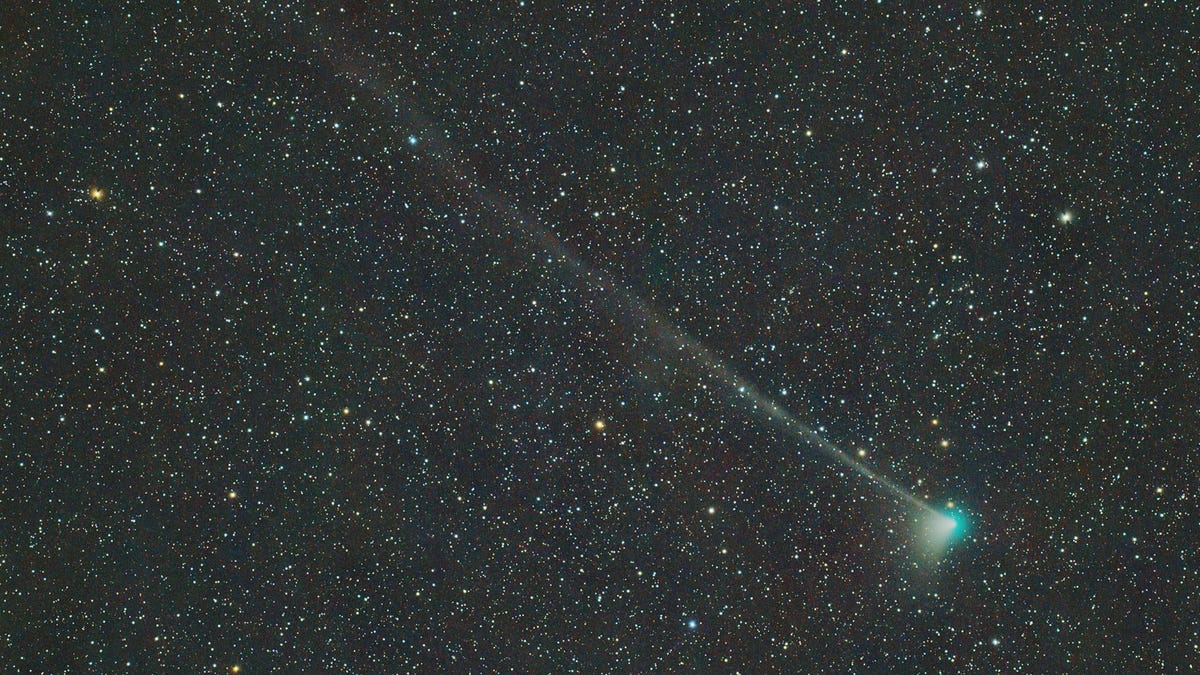
Comet C/2022 E3 (ZTF) as observed from Mount Fuji, Japan.
SpaceWeatherGallery.com/Akihiro Yamazaki
![]()
The new year is less than a week old, but what’s expected to be the brightest comet of 2023 could be within our sights soon.
Comet C/2022 E3 (ZTF) was first discovered in March by the Zwicky Transient Facility, aka ZTF, in Southern California, and it’s been speeding in the direction of the sun ever since. As the space snowball comes closer, it brightens and is now just weeks from making its closest passes by both the sun and Earth. This makes January and February prime time to try to see it for yourself, perhaps even without the need of a telescope, if it continues to shine ever brighter.
The comet has traveled hundreds of billions of miles from the Oort cloud in the outer reaches of the solar system, drawn by the gravity of the sun on its very long and elliptical orbit. It will finally reach perihelion, or its close pass by the sun, on Jan. 12. If it survives the intense heat and pressure from the encounter without breaking up, it will then begin to head back out to deep space, passing by Earth along the way in early February.
The comet is expected to be closest to Earth on Feb. 1, according to NASA, at which point it could become a magnitude six object, just bright enough to see with the unaided eye, though binoculars and very dark skies always help.
Attached is a composition of the evolution of comet C/2022 E3.
I have labeled the days, distance from the Sun and distance from Earth. Courtesy Didac Mesa Romeu. pic.twitter.com/fzq4AAMLJe— Con Stoitsis (@vivstoitsis) January 5, 2023
The behavior of comets is rather unpredictable, as they can brighten, dim or completely disintegrate with little warning. But if trends and the integrity of the cosmic cruiser hold, the moonless sky on Jan. 21 could mark a good night to start venturing out to try to spot it, according to the British Astronomical Association.
You can practice trying to spot the comet now with a backyard telescope as it continues to brighten (hopefully) until Feb. 1. By far the easiest way to locate it is with a site like In The Sky or the excellent mobile app Stellarium.
If you happen to get any great photos, please share them with me on Twitter, @EricCMack.
